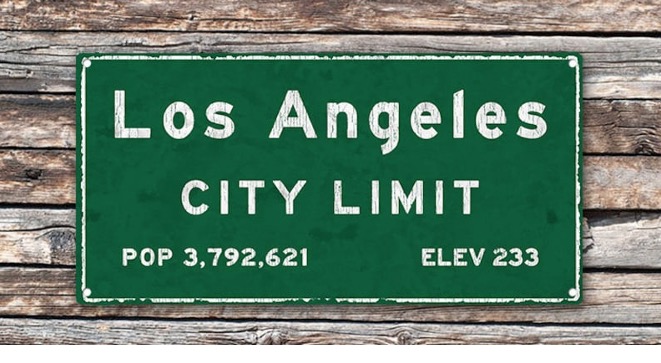Comments
PLANNING WATCH - Between July 1, 2020, to July 1, 2022, California’s population dropped by 509,000 people, almost all from out-migration. In the same period Los Angeles County lost 300,000 people for a similar reason: move-outs. From July 2022 to April 2023, the same causes remained, producing more population decline. In response, the corporate media boosters are desperate to find evidence of a turn-around, which is why they spotlight increases in traffic volumes, conveniently forgetting that traffic jams have been a chronic problem in Los Angeles for the past century.
While data for the city of Los Angeles is harder to find, the city had nearly 3.9 million people at the beginning of the Pandemic, and three years later LA’s population has declined to 3.7 million.
The LA Times summarized the causes for this population loss as follows:
“Migration out of the county has increased, with cost-of-living increases and the rise of working from home likely to blame. Immigration has decreased due in part to federal policies and pandemic restrictions.”
Since population decline was not predicted, it is instructive to look back at what City Hall once imagined LA’s future population to be. When the Los Angeles City Council adopted the General Plan Framework in 1996, the Framework forecast a 2010 population of 4.3 million people. This number is 400,000 people more than the city’s peak population, in the 2020 census, and 600,000 more people than at present. The wildly inaccurate 1996 population forecast was based on wishful thinking, justified by historic growth patterns. This methodology is, however, unreliable because past trends seldom predict the future. Not only does Los Angeles NOT have any open land left for new suburban-style subdivisions, but the cost of housing soared faster than incomes because wages stagnated and real estate companies, like Blackstone, gobbled up homes with cash purchases. Only a small percentage of Californians can now afford to buy a house because housing affordability dropped, from 31 percent in 2016 to 18 percent in 2023.
In LA the housing crisis is much worse. In September 2022, when mortgage rates were already 5.5 percent, a typical L.A. family needed to devote 84 percent of its income to house payments and property taxes. The Manhattan Pacific Realty housing affordability index now pegs Los Angeles at 13 percent. 87 percent of Angelinos are priced out of the housing market. Their options are renting, overcrowding, moving out, or sleeping outside.
The claims of perpetual population growth in Los Angeles have crashed into the rocks. It reflects the outlook of the urban growth machine that dominates City Hall politics. Comprised of real estate developers, public officials, mainstream media, and subsidized cheerleaders, their business model relies on continued population growth to buy and rent housing. In the past, the growth machine championed low density suburban sprawl, but forever chasing profits, they easily became advocates of high density, transit-adjacent in-fill development.

What suburban sprawl and in-fill development have in common is profit maximization. It once led to quickly constructed, low-density suburban subdivisions, served by cars and freeways. But when the profitability of suburbia shrank, real estate investors became true believers in luxury apartment buildings situated near mass transit. The combination of inflated land prices and highly profitable apartments led them back to the urban core. What stymied this new business model, however, was adopted zoning and environmental laws. This is why developers chiseled away at them, loading new buildings and residents into old neighborhoods, like Hollywood, despite its fraying infrastructure and public services.
How do we know that developers and their enablers were guided by the search for higher profits and NOT energy efficient development to combat the climate crisis?
First, when developers support new mass transit lines, they exclude the first-last mile public improvements that promote transit ridership. A perfect example is the Purple Line Extension subway on Wilshire Boulevard. METRO hosted public meetings to design its first-last mile improvements but did not fund the resulting plans. So much for street and sidewalk reconstruction, streetscape and trees, bicycle and scooter lanes, station amenities, and free fares. Instead, METRO’s agenda, in cahoots with City Hall, is zoning and environmental deregulation. It supposedly spurs the construction of expensive, transit-adjacent apartments. Never mind that the well-off tenants who can afford these apartments drive cars and rarely take buses or subways.
Second, their new infill business model ignores two essential features of good governance: timely plans that are rigorously monitored. Since these planning practices undermine their business model, they ignore them. This is why most of LA’s General Plan is old, and why plan monitoring ended 25 years ago. The public will eventually pay the price for this negligence, but not real estate developers. They have other priorities: flipping parcels and building high-rise apartments. When the bills eventually come due, they expect bail outs or to be long gone.
As for LA’s population, it will continue to shrink, with the in-fillers and gentrifiers squeezing out as much profit as possible, while they still can.
(Dick Platkin is a retired Los Angeles city planner who analyzes local planning issues for CityWatchLA. He is a board member of United Neighborhoods for Los Angeles (UN4LA). Previous Planning Watch columns are available at the CityWatchLA archives. Please send questions to [email protected].)
















